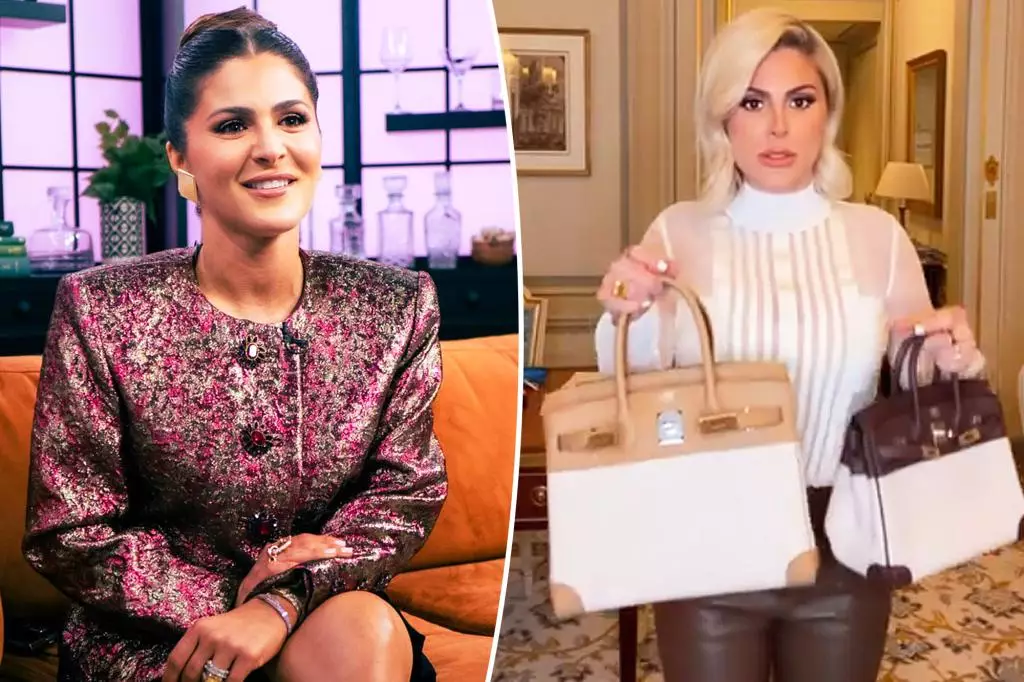Stephanie Shojaee’s story transcends the typical narrative of luxury consumption and ventures into a realm where passion, strategy, and personal values intertwine. Her assertion that her extensive Birkin collection is an “investment” challenges conventional perceptions of materialism, instead positioning these coveted handbags as symbols of deliberate wealth management. It’s rare to see such clarity and purpose in luxury pursuits, which often get dismissed as superficial. Shojaee’s approach demonstrates that high-end collectibles can serve as tangible assets, especially when curated with care and genuine relationships. Her methodical acquisition—slow installments, direct store dealings—reflects a disciplined mindset that treats luxury as a strategic part of her financial portfolio rather than impulsive spending.
Building Genuine Relationships in Opulence
The astonishing claim that Shojaee has cultivated meaningful relationships with Hermès stores worldwide elevates her narrative from mere consumer to savvy connoisseur. By establishing direct connections with multiple stores across continents, she sidesteps the reseller market, ensuring authenticity and potential value retention. This relationship-building not only grants her access to exclusive items but signifies a savvy understanding that genuine rapport with luxury brands enhances long-term value. Such strategic partnerships showcase that wealth isn’t merely about the quantity of possessions but about cultivating networks that add depth and security to one’s acquisitions. Shojaee’s global network exemplifies how modern luxury ownership often relies on complex interpersonal relationships rather than transactional exchanges alone.
The Luxury Lifestyle as a Personal Expression of Power
Shojaee’s unapologetic pride in her collection and her assertion that nobody else should touch her Birkins underscores a broader philosophy—luxury as personal sovereignty. Her firm boundaries highlight how possessions in the high-end world are intertwined with identity and authority. For her, these handbags are more than accessories; they are a personal sanctuary and a display of her success, control, and taste. Her disdain for secondhand Birkins reflects her desire to preserve the integrity and value of her collection. This approach challenges the common narrative of downsizing or reselling, emphasizing instead the importance of protecting one’s investments and emotional attachment to personal treasures.
Challenging Societal Judgments of Wealth
Perhaps most compelling is Stephanie’s critique of societal double standards. While conversations around car collections or art are normalized and celebrated, her own extensive Birkin collection sparks unwarranted judgments. Her argument that money spent on luxury is a personal choice and should not be subject to scrutiny resonates strongly. She draws a stark comparison—highlighting that affluent men’s pursuits (like vintage Porsches) are widely accepted, yet women’s luxury investments frequently face superficial criticism. Such double standards reveal underlying gender biases and societal discomfort with women’s consumption choices, especially when those choices are as conspicuous as her Hermès collection. Shojaee’s stance advocates for a broader acceptance of individual financial freedom, highlighting that ownership is a form of self-expression rather than frivolousness.
Redefining Success in the Age of Luxury
Stephanie Shojaee embodies a modern interpretation of success—one where wealth is expressed through deliberate, meaningful acquisitions rather than superficial displays. Her Birkin collection, backed by strategic relationships and personal conviction, becomes a symbol of empowerment. Her narrative encourages a reevaluation of high-end possessions, not as mere superficial tokens, but as reflections of personal achievement, investment acumen, and self-identity. In a society obsessed with appearances, her unapologetic stance insists that authenticity and intention are the true markers of luxury ownership, challenging us all to look beyond the surface and recognize the deeper stories behind material wealth.

